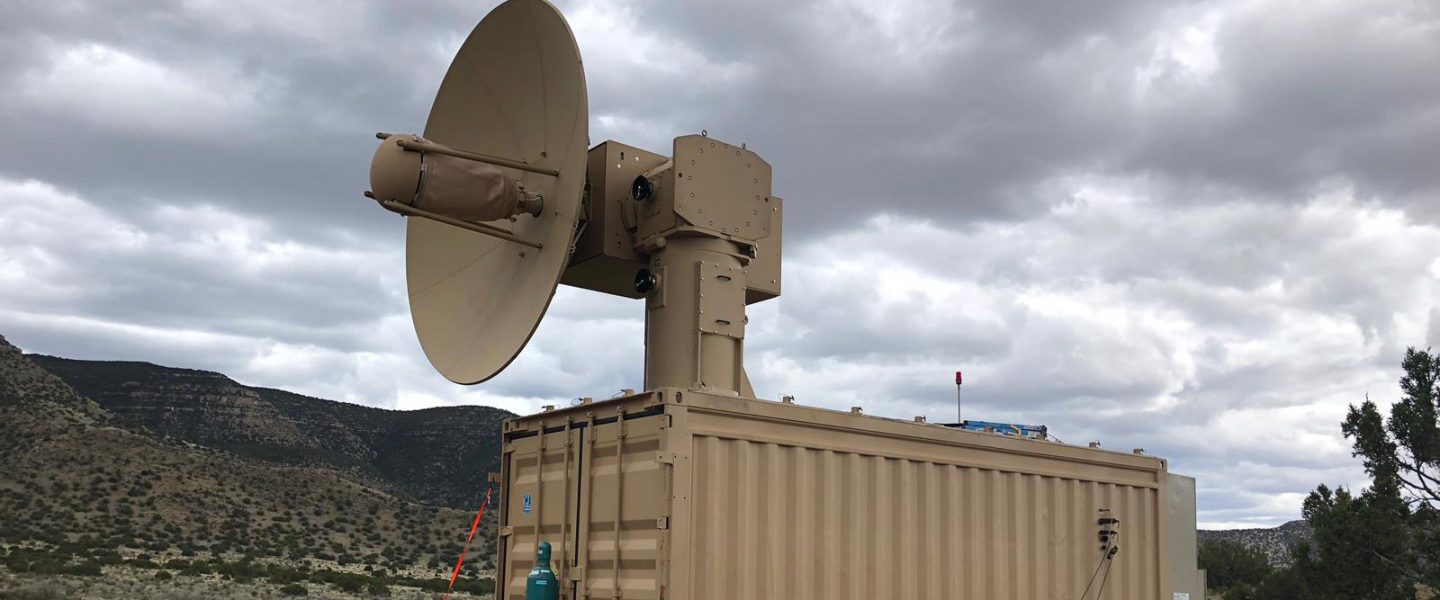The syndrome is mysterious, the attempts to deny its existence, not so much. For decades, the US has been secretly studying ways to exploit a similar phenomenon.
–OPINION–
EDITOR’S NOTE: After years of stonewalling and outright denials, a federal government report conceded on February 1, 2022 that US diplomats around the world may have been repeatedly assaulted by “pulsed microwave radiation” — a futuristic weapon deployed by unknown adversaries with unknown but clearly malign intent.
In this opinion piece, Paul Brodeur, a writer for The New Yorker — who won an Alicia Patterson Foundation Award for his reporting on the potential dangers of microwave radiation — lays out the tortured history behind the new government report, and its significance for understanding the frightening prospects for technological warfare in the 21st century. Brodeur’s take on the situation is very different from that expressed by other writers for the same magazine, as shown below.
WhoWhatWhy introduction by Gerald Jonas.
During the past five years, US newspapers and magazines have published a number of articles about the Havana syndrome — a sudden onset of ringing in the ears, dizziness, imbalance, earache, headache, and changes in behavior — which originated in the city after which it is named, and soon afflicted several hundred Foreign Service and CIA officers around the world.
The most detailed of these articles appeared in The New Yorker in November 2018, under the title “The Mystery of the Havana Syndrome.”
It was written by Adam Entous and Jon Lee Anderson. Relying heavily on State Department and intelligence agency sources, Entous and Anderson informed their readers that no one in the United States government had any idea how the Havana syndrome was operating to adversely affect the people who were exposed to it. Other media echoed similar claims of ignorance about the syndrome.

These claims are open to question. I am a former staff writer at The New Yorker who, in 1976, wrote the first articles about the ability of microwave radiation to cause changes in the central nervous system and behavior, as well as other biological effects. They appeared in the magazine when the Soviet Union was bombarding the US embassy in Moscow with microwave radiation known as the “Moscow Signal.”
At the time, government officials surmised that the Soviets were using the radiation to activate listening devices hidden in the walls of the embassy. They also voiced concern that it was being employed to affect the behavior of US diplomats and other personnel who were stationed there.
If Entous and Anderson had consulted The New Yorker library to learn whether the magazine had previously published anything about a phenomenon suspected of causing changes in the behavior of diplomats, they would have found my articles about the adverse biological effects of microwave radiation and the Moscow Signal.
They would also have come across a raft of evidence documenting the efforts of the State Department and other government agencies to keep awareness of the signal under wraps.
As a result, they might have been dubious about believing what they were being told about the Havana syndrome by sources that had gone to great lengths to deceive the press and public about the earlier Soviet irradiation of the Moscow Embassy and its staff.
The cable read like ventriloquism by satellite. One of the queries assumed that someone might ask “Isn’t the State Department knuckling under pressure from military and industrial interests to downplay or even cover up the significance of microwave effects on health?”
My own experience with the State Department regarding the Moscow Signal should serve instructive. Within a week of the publication of my articles I received three envelopes in the mail postmarked Washington, DC, with no return address. They had obviously been sent by people who wished to remain anonymous.
Each of the envelopes contained a copy of a classified cable signed by Secretary of State Henry A. Kissinger which listed potential questions that might be asked about my articles by Foreign Service employees at the Moscow Embassy, followed by answers that were to be given by State Department spokesmen in the event the questions were posed.
The cable read like ventriloquism by satellite. One of the queries assumed that someone might ask “Isn’t the State Department knuckling under pressure from military and industrial interests to downplay or even cover up the significance of microwave effects on health?”
To this query the spokesman was told to reply “No.”
To another possible question: “What about the former Embassy administrative officer’s wife who died of cancer?” The spokesman was told to reply “I do not intend to discuss individual cases,” — which omitted the fact that the State Department had settled a lawsuit brought by the administrative officer, claiming that his wife’s cancer had been caused by radiation.
The prepared response to an additional question revealed more deceit on the part of the Department. The telephone of Walter J. Stoessel Jr., the US ambassador to the Soviet Union, was said to have given off high levels of radiation, and it was widely rumored that he had developed a serious blood disorder. Indeed, The Boston Globe had reported that the ailment resembled leukemia, and was thought to be caused or aggravated by microwave radiation.
If asked “What about Ambassador Stoessel’s health? Has it improved since he left Moscow?” The prepared reply was: “Ambassador Stoessel is on duty in Bonn and I have nothing to add to my earlier comments.”
The fact of the matter is that Stoessel had developed leukemia and had taken a leave of absence from his duties in Germany to be treated at a blood disease clinic in Switzerland. When I interviewed his daughter, Katherine, she told me her father was convinced that his illness had been caused by exposure to microwave radiation in Moscow but had decided to become, in her words, “a good soldier in the cause of national security.’’
(Regarding the connection between exposure to microwave radiation and the development of cancer, it is interesting to note that in 2011, a committee of more than 30 medical scientists convened by the World Health Organization’s International Agency for Research on Cancer [IARC] evaluated human epidemiological studies showing increased brain cancer among long-term users of cell phones, which emit low-level microwave radiation into the ears of users, and concluded that microwaves were a possible human carcinogen. Also of interest is a 2018 study conducted by the U.S. National Toxicology Program which found that rats exposed to cell phone microwave radiation were more likely to develop certain cancers than unexposed animals, and which has resulted in calls for the IARC to upgrade microwave radiation from a possible to a probable cause of cancer.)
Stoessel died of leukemia in 1986. The obituaries that appeared in The New York Times and The Washington Post made no mention of his microwave exposure. Notes of my two meetings with his daughter, as well as a copy of Kissinger’s cable, can be found in the collection of my papers at Boston University’s Howard Gotlieb Archival Research Center.
Kissinger’s cable and its attempt to deceive Foreign Service employees at the Moscow Embassy did not become widely known until the following year when my New Yorker articles appeared in expanded form in a book titled “The Zapping of America.” However, if Entous and Anderson had read those articles they would have learned the following about the biological effects of microwave radiation and its probable connection with the Havana syndrome.
They would have learned that studies of Soviet radar workers exposed to microwaves during and after World War II demonstrated they were experiencing headache, fatigue, diminished intellectual capacity, and loss of memory — some of the same symptoms US diplomats and spies were undergoing when subjected to the Havana syndrome — and that Soviet scientists were investigating the technology behind these symptoms.
They would have learned that during the early 1960s an American scientist named Allan H. Frey had discovered that human beings could hear pulsed microwave radiation, which they might have found interesting considering that they had described victims of the Havana syndrome as suffering from “mysterious sonic attacks.”
They would have discovered that US intelligence agency officials had known since the early 1960s that the Russians were irradiating the US embassy in Moscow with microwaves, but those officials had kept it secret for more than 10 years from the Foreign Service employees who were stationed there.
Most important of all, they would have learned that in 1965 the Advanced Research Projects Agency (ARPA), an organization within the Department of Defense tasked with developing new weaponry, had set up a special laboratory at the Walter Reed Army Institute of Research in Washington where rhesus monkeys were irradiated with microwaves at power densities and frequencies similar to those of the Moscow Signal in order to determine whether the signal could induce changes in the behavior of the animals.
Might this have led them to wonder if the United States had become engaged in a race with the Soviet Union to develop a microwave weapon?
Whatever the case, a second article about the Havana syndrome, which was written by Entous alone, appeared in the May 24, 2021, issue of The New Yorker under the title “Are U.S. Officials Under Silent Attack?”
Entous disclosed that by now the government had decided the syndrome was probably being caused by microwave-emitting devices aimed at US officials to collect intelligence from their computers and cell phones, resulting in brain injury in the process.
He did not speculate on the reason for the previous five-year stonewalling of the press and public about the syndrome, but it seems likely that the government may have wished to hide its own development of a microwave weapon because it was concerned about adverse reaction on the part of the American people to such a fearsome means of mind and crowd control.
Toward the end of his piece, Entous revealed the extent to which his sources were continuing to mislead him. “U.S. national security agencies have a program under way to develop effective countermeasures,” he wrote. “They are looking into what it might take to build a device that can cause brain injuries similar to those which have been observed in Havana syndrome patients. As part of that effort, scientists at a military laboratory are planning on exposing primates to pulsed microwave radiation and then studying their brains.”
Has it occurred to them that a military establishment such as ours which has developed drones that can be controlled with radiation beamed from satellites to kill people riding in cars in Iraq and Afghanistan has surely been capable of experimenting with various frequencies and pulse widths of microwave radiation to come up with a device similar to the one causing the Havana Syndrome?
The credulity that allowed Entous to report on such a program as if it was just beginning would boggle the mind were it not apparent he had no idea of the ARPA-funded research with monkeys more than half a century earlier.
Credulity regarding the Havana syndrome was not limited to reporting in The New Yorker as became evident on January 20, 2022, when The New York Times, The Washington Post, The Wall Street Journal, NBC, CBS, ABC, CNN, and other newspapers and TV networks in the nation ran stories about a so-called “interim report” issued by the CIA which sought to reverse the government’s previous position regarding the role of microwave radiation in the Havana syndrome.
According to the CIA, microwaves were not being used by any foreign power against the United States nor were they causing the strange symptoms afflicting US diplomats and intelligence agents. Rather, these symptoms were the result of environmental factors, undiagnosed medical conditions, and stress.
The article in the Times raised the possibility that stress was causing psychogenic reactions or so-called functional illness — aka mass hysteria — in syndrome victims. An article in Slate suggested that the syndrome was a condition to be found in people whose brains had gone “haywire.”
None of the journalists who covered the story saw fit to find out what environmental factors and undiagnosed medical conditions might be causing the symptoms associated with the Havana syndrome.
Nor did any of them question how mass hysteria might suddenly have affected the 1000 government officials whom the Agency numbered as claiming to have been exposed to it.
Instead, for the most part, they dutifully reported on the findings of the CIA interim investigation just as their colleagues had dutifully reported on earlier claims by the government that it had no idea what the Havana syndrome was or how it operated.
Ten days later, whipsawed by conflicting information, they were obliged to write about yet another intelligence assessment. The latest investigation — which was conducted by a panel of experts convened by the director of national intelligence and the deputy director of the CIA — contravened the findings of the Agency’s interim report by ruling out psychosocial factors, neurological abnormalities, mass hysteria environmental conditions, and medical problems as accounting for the syndrome.
The Mysterious, Anonymous “Energy Weapon”: Whose Op Is It, Anyway?
At the same time, it reduced the scope of the problem by concluding that the most plausible cause for the phenomenon in a small group of unsolved cases — albeit one accompanied by many caveats — was pulsed microwave radiation.
The investigation made no attempt to explain how the 1000 previously estimated cases of the syndrome had been winnowed down so quickly, let alone how two reports issued within ten days of one another — the first by the CIA and the second with input from the Agency — could arrive at such opposite conclusions.
Nor did journalists covering the story ask for explanation.
A plethora of questions begs to be raised about the confusing and contradictory reporting on the Havana syndrome that has found its way into the nation’s media.
Should journalists be relying so heavily on sources in the State Department, the CIA, and other intelligence agencies in writing their articles?
Do they have any idea of the sorry record of these organizations when it comes to disclosing accurate information about the harmful biological effects of microwave radiation?
Has it occurred to them that a military establishment such as ours which has developed drones that can be controlled with radiation beamed from satellites to kill people riding in cars in Iraq and Afghanistan has surely been capable of experimenting with various frequencies and pulse widths of microwave radiation to come up with a device similar to the one causing the Havana syndrome?
Are they so trusting of their intelligence-agency sources as to believe that the government would have waited more than half a century to begin developing such a weapon?
Answers to these questions may not be forthcoming anytime soon. Meanwhile, journalists might benefit from vaccination with a strong dose of skepticism to protect us all against the obfuscation spread by a government that appears determined to keep a lid on the mystery of the Havana syndrome.



